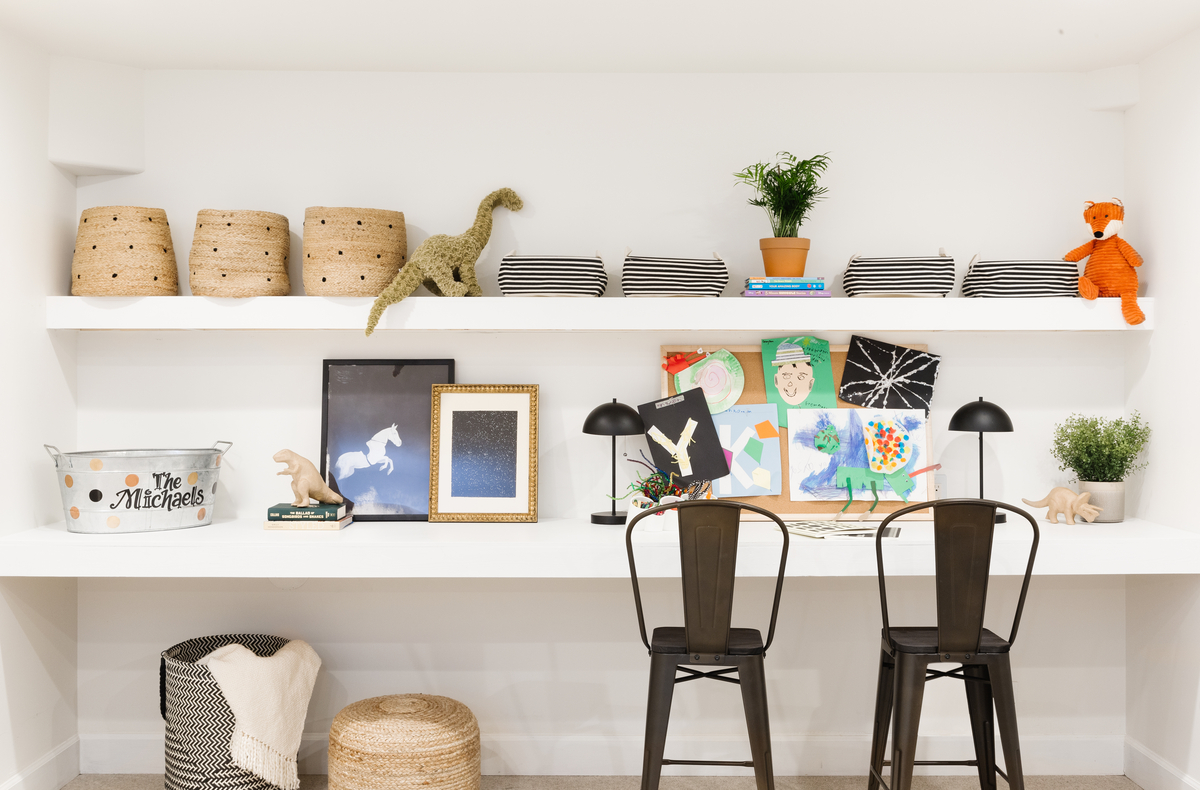Let’s face it, the word “homework” might not make kids jump for joy, but having a dedicated and personalized study space in your home can certainly change their perspective. Forget the days of sitting at the kitchen table with a million and one distractions; create a space where your kids can feel comfortable and confident to get their work done.
Sounds too good to be true? We promise, it’s actually so feasible. It just takes a little strategizing, organization, and of course, design goodness. We’ve gathered the best tips from our expert designers to help get you started on creating a stylish and functional homework station.
Minimize Distractions
When we first shifted to a virtual school setting we quickly adapted to make it work, whether that was annexing the dining table for daily classes or converting the living room into a classroom. Now, not only with the possibility that we might be in and out of remote learning situations, but also, with just the ongoing reality that good old fashioned homework happens at home, we’re looking towards more sustainable, long-term ‘home work’ solutions.
Since many of us are without a distinct study room (though: one can dream of a bookshelf-lined library that cues homework hour in style), it’s often necessary to create a defined area for homework as a dual-purpose function within another room. For your homework station, consider finding a location away from high-traffic areas—especially the kitchen—to best minimize distractions and wandering attention. Try to locate a more remote corner that sees limited action during after school hours. This could be a guest room, basement space, or side wall of the living or dining room.
Pro tip: wherever you decide, check to make sure it’s near a power outlet for computer work. Tripping over an extension cord certainly won’t add to positive and happy homework feels.
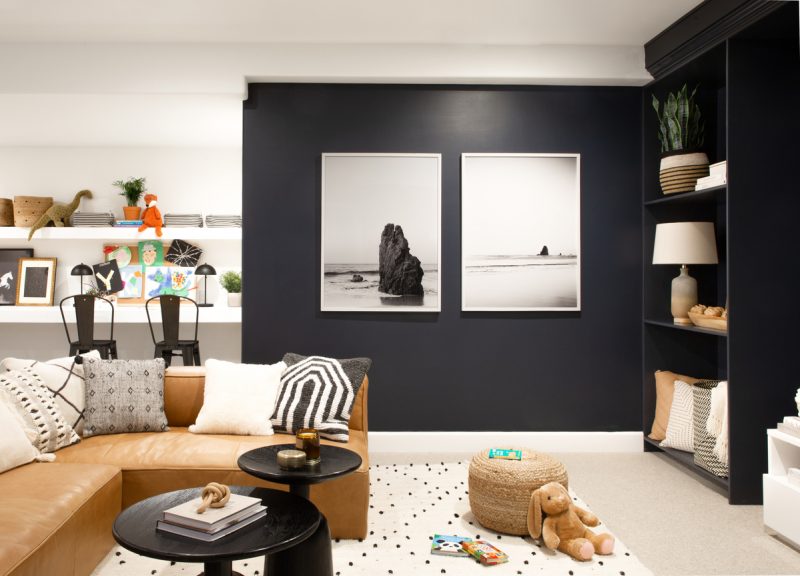
Devoted Desk Space
While studying from the sofa may sound cozy (we’ve certainly been there), nothing beats a traditional surface and chair setup—especially for a prolonged period of time. If you have the space, we highly recommend investing in a devoted desk area that says, “It’s time to get to work.” There are countless small-scale solutions—like this mini desk from West Elm—to create a productive school zone without taking up precious room real estate. Some of our favorite options even offer vertical shelving above the desk for additional storage, as well as styling—this 70-inch vertical desk from CB2 is a great example. Or, if your aesthetic is a bit more rustic, something simpler like this wooden desk might be the right fit.
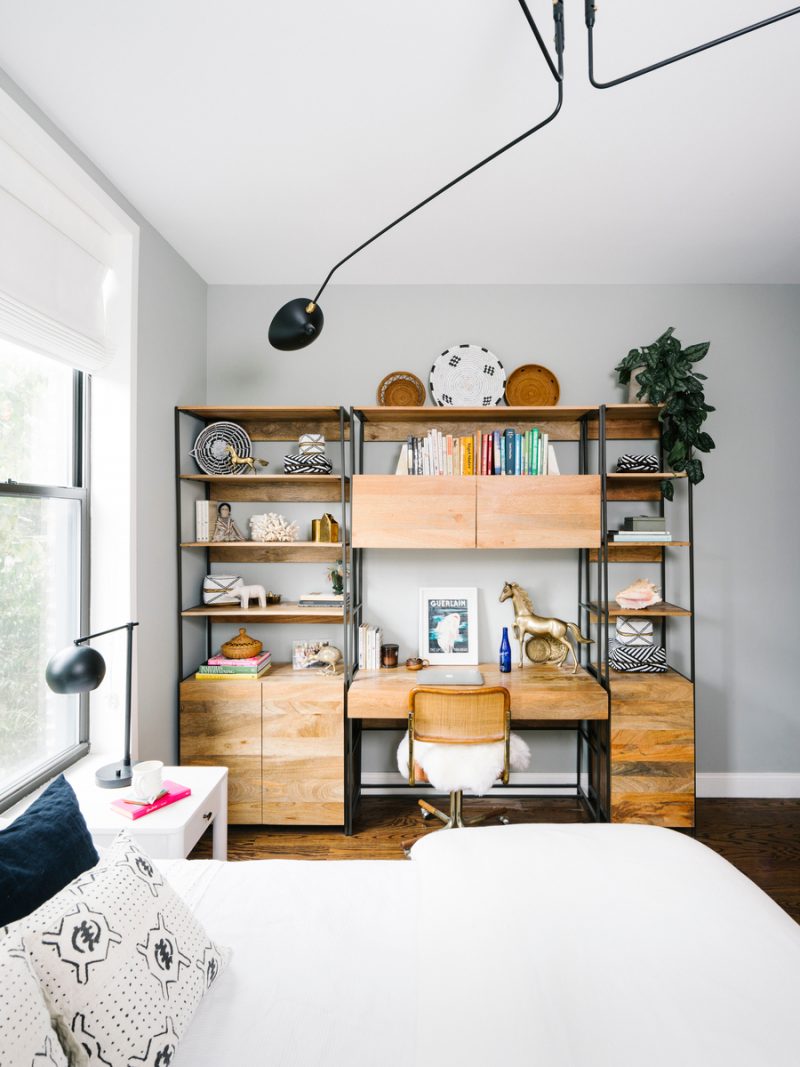
You might also consider a more non-traditional benching solution along an unused wall space. This can be an easy (and affordable) way to get a longer stretch of work space. BONUS: pending the size of your space, this can flex to support more than one kiddo.
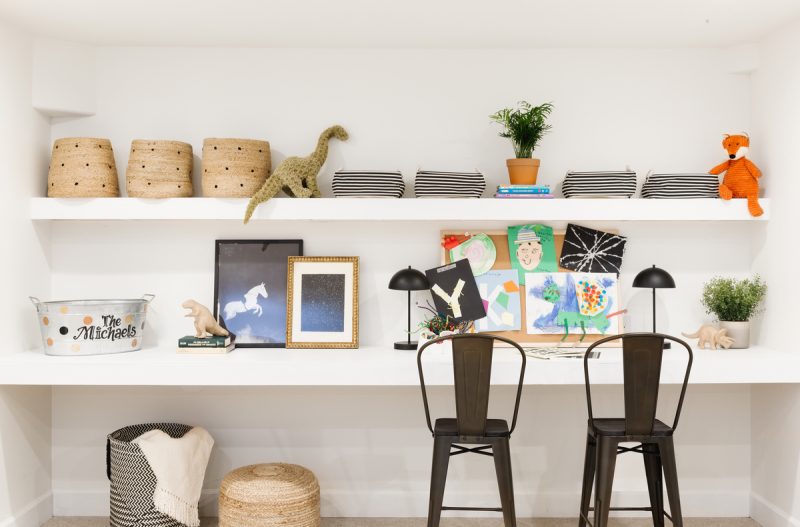
Naturally, with a desk comes a comfortable chair. Experts agree that the best posture for concentration is the 90-90 rule: knees bent at 90-degree angles with feet on the floor and posture at 90-degrees as well. You can opt for a more standard task chair (extra points for ergonomic benefits), or consider a stylish dining chair with solid back support.
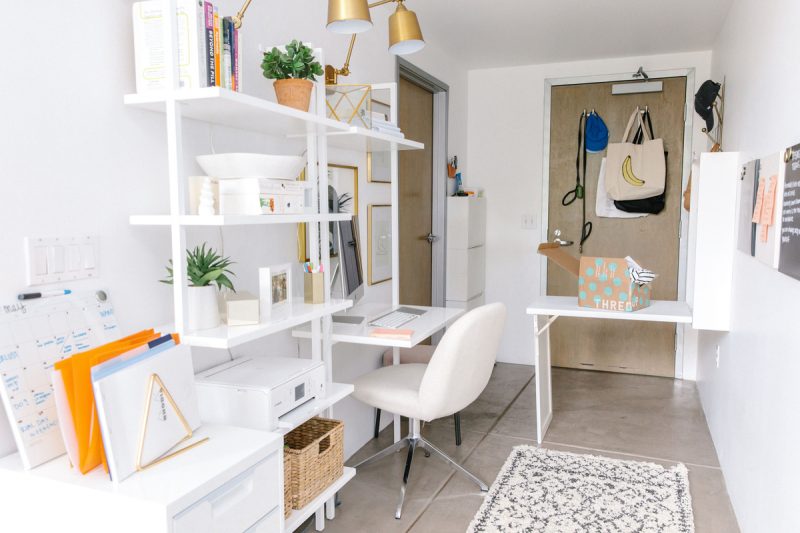
Contain the Clutter
Whether your kids are tackling homework in the evenings, or even more, virtual schooling all day, somehow classroom materials always seem to both a) multiply (“how did we get so many highlights?”), and b) get lost (likely hanging out with those missing socks). For homework hour(s) to be at its most productive, create some order in the chaos with intentional organization. Buy a shelving unit or different bins with closed tops so you can hide away clutter in a semi-organized fashion without adding a lot of extra work. After homework is complete, create a ritual of moving aside notebooks, storing highlighters and sticky notes, and wrapping away power cords. This will give your students a much needed mental break from looking at the relics of the school day and invite them to transition into homeplay time. Not to mention, it also reduces the visual noise around your spaces to create a greater sense of calm (benefitting both students and parents alike).
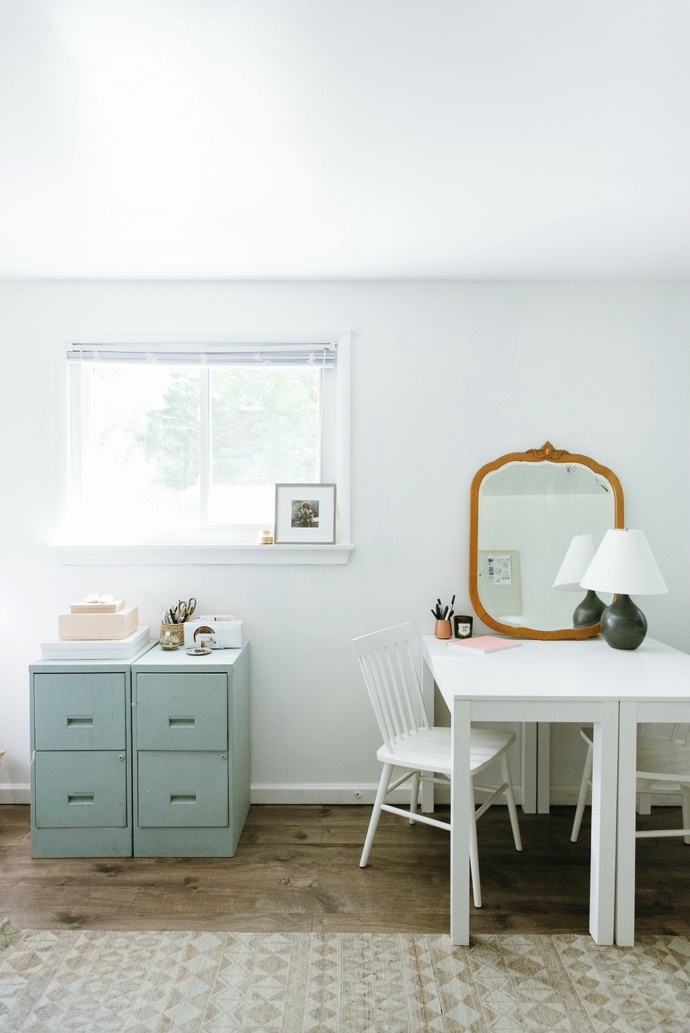
Keep It Lit
Research shows that natural light is most optimal for productivity, creativity, and yes, even emotional sanity. If possible, aim to create your homework station in a space near windows for sunlight to filter in while your students work. It’ll offer a natural boost to help kids tackle their studies — and feel happier doing so!
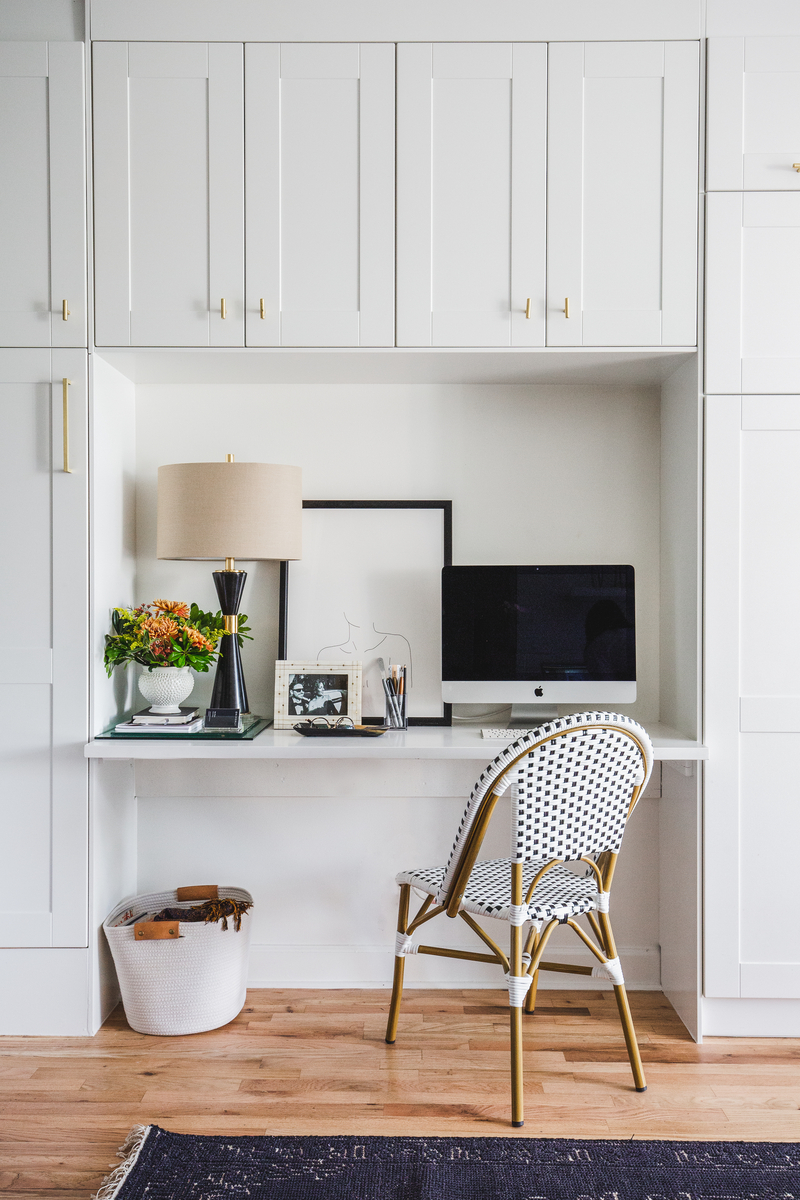
If windows aren’t an option, minimize eye strain with supplemental lighting like task lamps. They’ll direct the light to the focused areas you need most. The goal is not to be squinting to read text or relying only on the glow of the screen.

Don't Forget Inspiration
Necessity sometimes dictates that your schooling zone is somewhere in your home that isn’t particularly interesting—a plain basement or undecorated spare room. We live by the mantra that if a space is comfortable and aesthetically pleasing, you’re more likely to want to spend time there. Investing in a homework station that has sufficient natural light, a chair that doesn’t kill your kids back, and some pleasant design elements is critical to maintaining studious spirits after hours (when playtime is calling).
Just as teachers would usually prep their classrooms to create a motivating environment, this is your opportunity to create a functional and inspiring workspace for your student. Go ahead and spring for a more stylish homework station set-up, accessorize with plants and decor (this also a great place to display kids’ artworks when your fridge space is maxed out), and install a pinboard for daily reminders, notes, and photos of family and friends.


